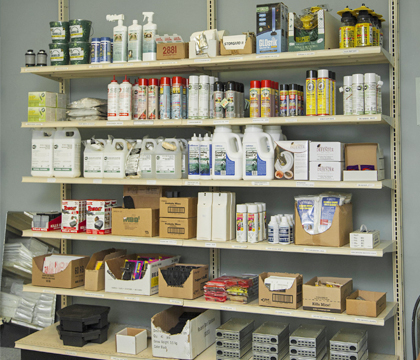Image Source: Google
Dealing with pests in your home can be a frustrating and challenging experience. While professional pest control services are available, some homeowners prefer to take matters into their own hands and tackle the issue themselves. If you're one of these DIY pest control supply shop enthusiasts, you'll be pleased to learn about some secret weapons that can help you effectively combat pests in your home. From prevention techniques to natural remedies, these strategies can give you the upper hand in the battle against unwanted intruders.
Prevention is Key
One of the most important aspects of successful DIY pest control is prevention. By taking proactive measures to deter pests from entering your home in the first place, you can save yourself a lot of time and effort in the long run. Here are some key prevention techniques to keep in mind:
Seal Entry Points
- Inspect your home for any gaps or cracks that pests could use to get inside.
- Seal openings around doors, windows, pipes, and vents with caulk or weather stripping.
- Repair damaged screens on windows and doors to prevent insects from entering.
Maintain Cleanliness
- Keep your home clean and tidy to eliminate potential food sources for pests.
- Store food in airtight containers and clean up spills promptly.
- Dispose of garbage regularly and keep outdoor trash bins tightly sealed.
Natural Remedies
When it comes to pest control, you don't always have to rely on harmful chemicals to get the job done. There are plenty of natural remedies that can effectively repel pests without posing a risk to your health or the environment. Here are some natural ingredients that DIY pest control enthusiasts swear by:
Peppermint Oil
- Peppermint oil is a natural insect repellent that can deter ants, spiders, and other pests.
- Mix a few drops of peppermint oil with water in a spray bottle and apply it to areas where pests are present.
- Refresh the scent regularly to maintain its effectiveness.
Diatomaceous Earth
- Diatomaceous earth is a powdery substance that is effective at killing insects like cockroaches, ants, and bed bugs.
- Apply a thin layer of diatomaceous earth in areas where pests are known to frequent, such as along baseboards and behind appliances.
- Be sure to use food-grade diatomaceous earth to ensure safety around pets and children.
Strategic Traps
Using traps is a common and effective method of DIY pest control. By strategically placing traps in areas where pests are active, you can capture them and prevent infestations from spreading. Here are some types of traps that are popular among DIY enthusiasts:
Glue Traps
- Glue traps are non-toxic and easy to use, making them a popular choice for catching insects like spiders, roaches, and rodents.
- Place glue traps along baseboards, in corners, and near entry points to trap pests as they move around your home.
- Check and replace traps regularly to maintain their effectiveness.
Electronic Traps
- Electronic traps use bait to attract pests and deliver a lethal shock to eliminate them.
- These traps are a humane way to deal with pests and are particularly effective for catching rodents like mice and rats.
- Follow the manufacturer's instructions for setting up and disposing of electronic traps safely.
Consistent Monitoring
Even after taking preventive measures and implementing pest control strategies, it's important to monitor your home regularly to ensure that pests are not making a comeback. Consistent monitoring can help you catch any signs of pest activity early on and take action before the problem escalates. Here are some tips for monitoring pests in your home:
Inspect Your Home
- Regularly inspect your home for signs of pests, such as droppings, gnaw marks, or nests.
- Pay attention to any unusual odors or sounds that could indicate the presence of pests.
- If you suspect an infestation, take immediate steps to address the issue before it worsens.
Keep Records
- Maintain a pest control log to track any sightings or activity in your home.
- Note the date, location, and type of pest encountered to help identify patterns and trends.
- Use this information to adjust your pest control strategies as needed.

